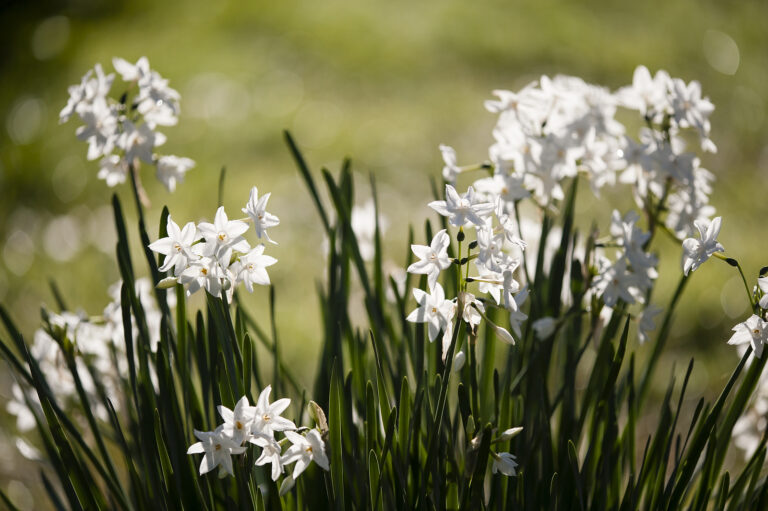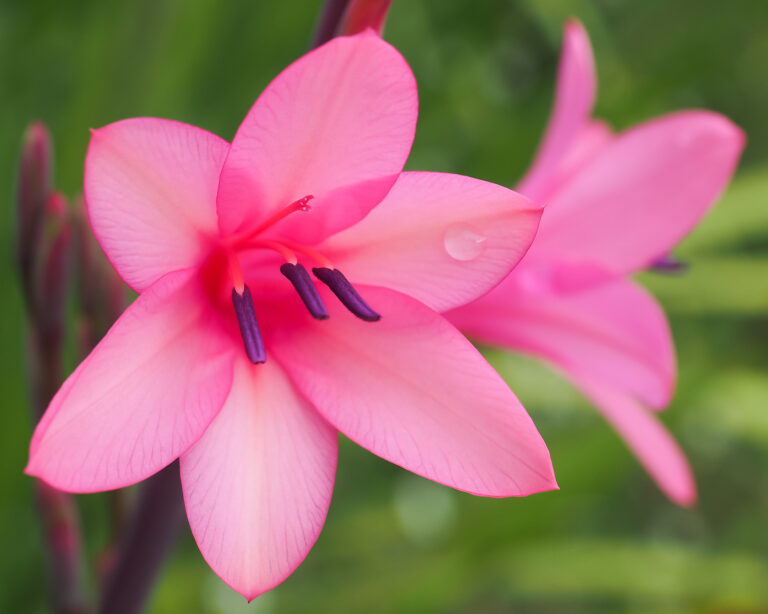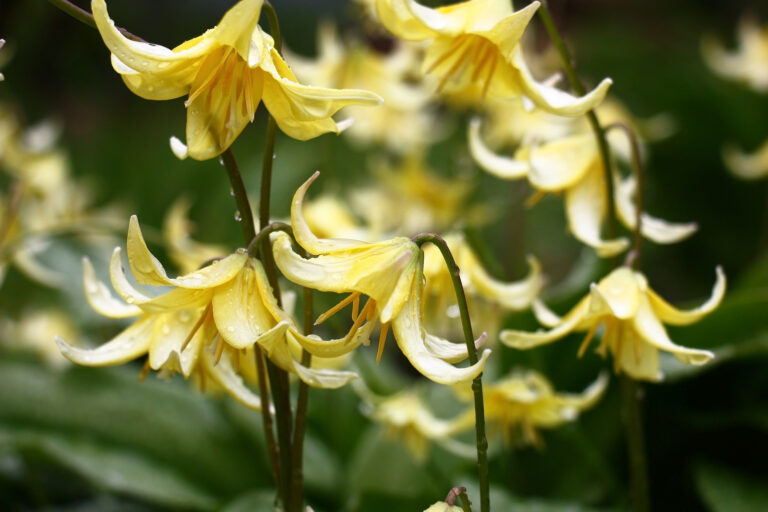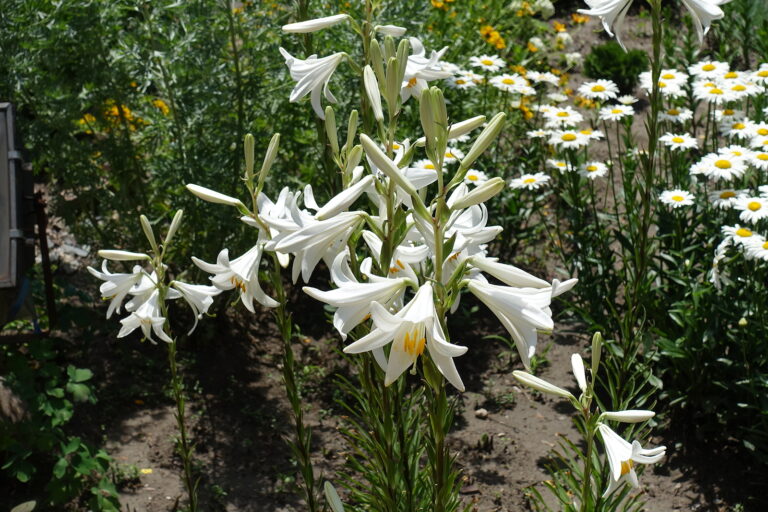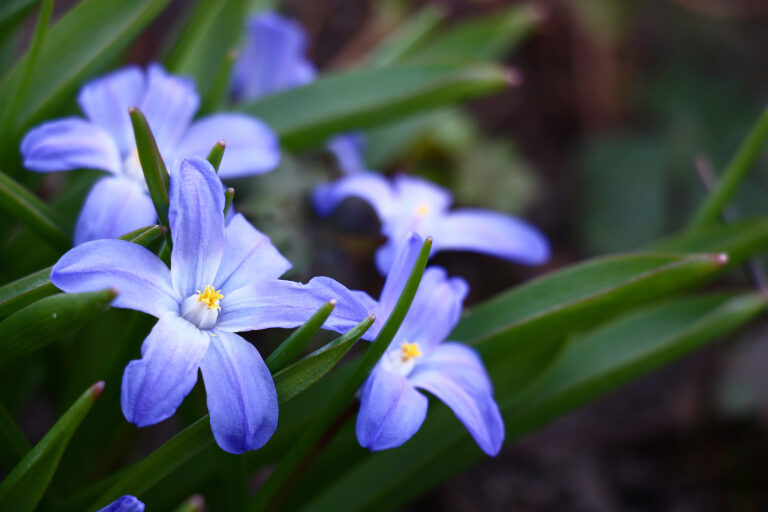How to Grow Agapanthus — Lily of the Nile
Agapanthus is an evergreen perennial with strap-shaped leaves and spherical heads of commonly deep blue trumpet-shaped flowers. Flowers appear on sturdy unbranched stems during summer.
Agapanthus is suitable for mixed or single plantings. They are very showy massed in borders or edging along walks or drives. Dwarf varieties are well-suited for small gardens or containers.
In cold winter regions, lift and store agapanthus rhizomes over winter or lift plants before the cold arrives and grow them in a container in a bright indoor location throughout the winter.
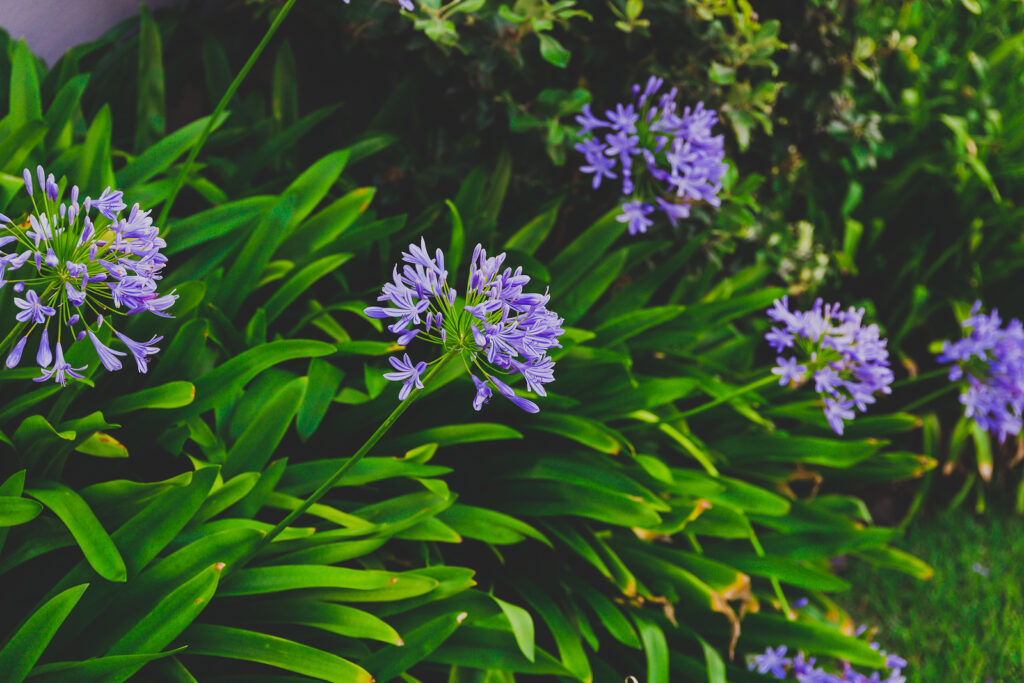
Get to know Agapanthus
- Plant type: Rhizomatous, clumping deciduous or evergreen perennial
- Growing Zones and range: Zones 8 to 10 outdoors; overwinter indoors in colder zones
- Hardiness: All varieties will survive to 10°F (-12°C); deciduous kinds will survive to -10°F (-23°C).
- Optimal growing temperature: day 68° to 72°F (20°-22°C), night 50° to 55°F (10°-13°C)
- Height and width: 12 to 18 inches (30-45cm) tall and wide; flower stalks 2 to 4 feet tall
- Foliage: Clumps of usually arching, large, strap-shaped, deep green leaves
- Flowers: Large clusters of dense spherical blooms, blue or white flowers on erect stalks; flared, tube-shaped flowers.
- Flower colors: Blue, purple, or white blooms
- Bloom time: Summer
- Uses: Beds, groundcover, containers, accent planting, cut flowers, cottage, and woodland gardens
- Common name: Agapanthus, Lily of the Nile, African lily
- Botanical name: Agapanthus
- Family: Amaryllidaceae
- Origin: Southern Africa

Where to plant Agapanthus
- Plant agapanthus in full sun or partial shade in Zones 2-6; plant in light shade in Zones 7-11.
- Grow agapanthus in humus-rich to average, well-drained soil.
- In cold winter regions, overwinter agapanthus in a bright cool spot at 40° to 50°F (4.4°-10°C) and water sparingly until active growth resumes in spring.
- Agapanthus prefers a soil pH of 5.5 to 6.5.
- Light indoors: Winter, full sun from southern exposure; summer, morning sun and partial shade from eastern to southern exposure
Agapanthus uses and companions
- Grow Agapanthus in borders or large containers.
- Dwarf varieties can be used as foreground plantings or as groundcovers.
- Companions include Achillea, Chrysanthemum superbum, Coreopsis, and Senecio.
When to plant Agapanthus
- Set rhizomes 1 inch (2.5cm) deep in the garden after all danger of frost has passed.
- In mild winter regions, container-grown agapanthus can be set in the garden from spring through autumn.
Planting and spacing Agapanthus
- Space agapanthus from 12 to 24 inches (30-61cm) apart depending on species.

How to water and feed Agapanthus
- Agapanthus needs regular water for the best blooms. Established plants that are not blooming can get by with less water.
- Gradually withhold water in fall and keep roots dry over winter.
- Fertilize agapanthus with a slow-release fertilizer at planting time. Work a slow-release fertilizer into the soil each spring.
- Fertilize agapanthus every 6 to 8 weeks during the growing season with an all-purpose fertilizer.
- Feeding indoors: Feed every 2 weeks during the growing season with a mild liquid fertilizer.
Agapanthus care
- Agapanthus should be lifted after the first frost in Zones 2-6. Store rhizomes through the winter and replant in spring or set plants in containers and grow them indoors through the winter.
- Agapanthus left in the garden through winter should be heavily mulched; overwinter agapanthus only in well-drained soil.
- Agapanthus blooms best when the roots are slightly crowded.
Growing Agapanthus as a houseplant
- Place containers of agapanthus in a room with average temperature, direct light, and medium humidity.
- In summer, protect agapanthus from the direct midday sun.
- Keep the growing medium evenly moist in spring, summer, and fall; allow it to dry out between waterings during the winter.
- Fertilizer agapanthus every two weeks during spring and summer.
- Agapanthus grows best if it is pot-bound; in summer, move it outdoors to a sheltered spot.
Agapanthus pests and diseases
- Slugs and snails can be a problem for agapanthus. Sprinkle diatomaceous earth around plants as a barrier.
- Agapanthus resists diseases but is susceptible to deer.
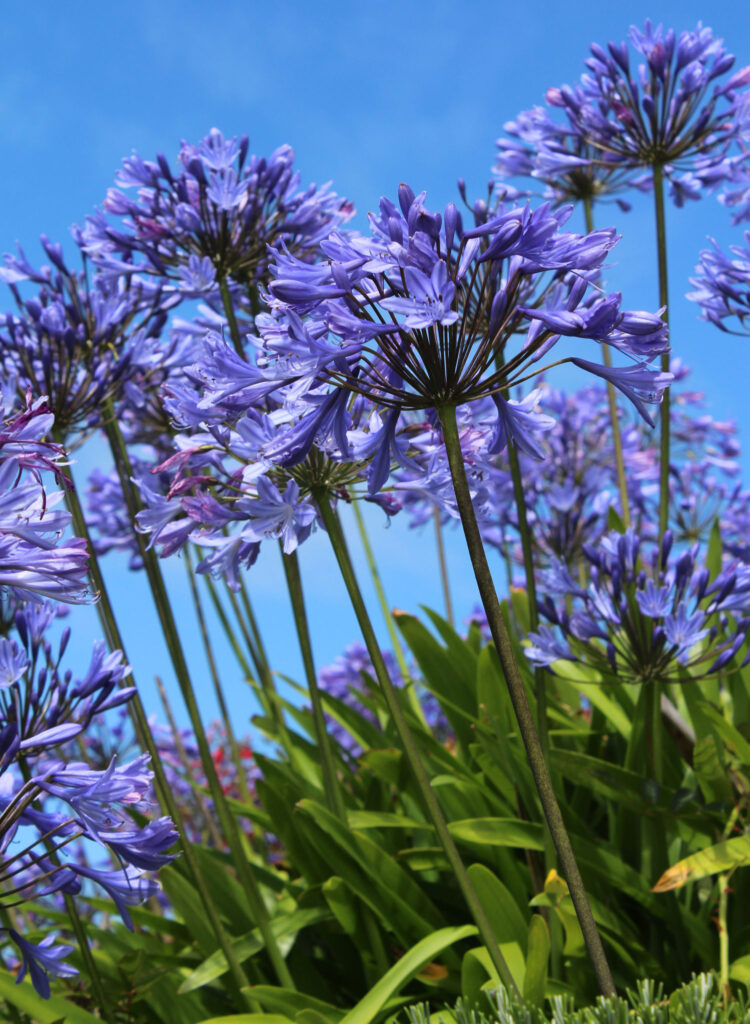
Agapanthus propagation
- Sow seed in spring; seedlings will need protection for many months.
- Seeds germinate in 6 to 10 days at 55 to 58°F (13-14°C). Plants will be large enough for transplanting in 18 to 26 days. Plant flower a little the second year from seed but more profusely the third year after sowing; in general plan 2 to 4 years from seed for flowering.
- Divide clumps and rhizomes in late winter or early spring or remove offsets and replant them immediately.
- Divide Agapanthus clumps every 5 to 6 years.
Agapanthus varieties to grow
- Agapanthus africanus, African lily, lily-of-the-Nile. Grows to 2 to 3 feet (61-91cm) tall and spreads half as wide; rich green leaves 1 inch wide; bears rounded 6 to 12 inch (15-30cm) wide umbels of dark purple-blue flowers in late summer; individual blooms are trumpet-shaped and 1 to 2 inches long.
- A. campanulatus is a deciduous clump-forming species that grows 2 to 4 feet (1.2m) tall and bears rounded 4 to 8-inch (10-20cm) umbels of bell-shaped flowers that are pale to dark purplish-blue; ‘Albovittatus’ produces white-striped leaves.
- A. hybrids range from 1 to 4 feet tall; ‘Peter Pan’ is a dwarf that reaches 8 inches (20cm) tall; ‘Bressingham White’ produces white flowers; ‘Storm Cloud’ produces dark-purple flowers.
- A. inapertus. Flower clusters grow 4 to 5 feet tall, deep blue blossoms; this species is deciduous.
- A. orientalis. Evergreen grows to 2 to 3 feet (1m) tall; bears up to 100 blue flowers; leaves are longer and wider than A. africanus; ‘Albus’ is a white-flowered cultivar; ‘Nanus’ is dwarf and compact; ‘Variegatus’ has striped foliage.
Agapanthus frequently asked questions
Q: What is the proper care for agapanthus grown indoors?
A: Let agapanthus rest in winter. Keep the plant nearly dry at a temperature near 45°F. In spring, help the plant resume growth by increasing water and temperature. In summer, place the plant outside in a sunny place and keep the soil evenly moist. Repot agapanthus only in spring when the roots crowd the pot. The plant should bloom in mid to late spring; when in bloom water and feed the plant.
Q: How deep should agapanthus bulbs be planted?
A: The tuberous roots should be planted just beneath the soil surface. The crown of the plant should be just at the surface of the soil.
Q: How often should agapanthus be repotted?
A: Agapanthus does not need frequent repotting. They do best when pot-bound. Divide the plant in spring every 4 to 5 years.


